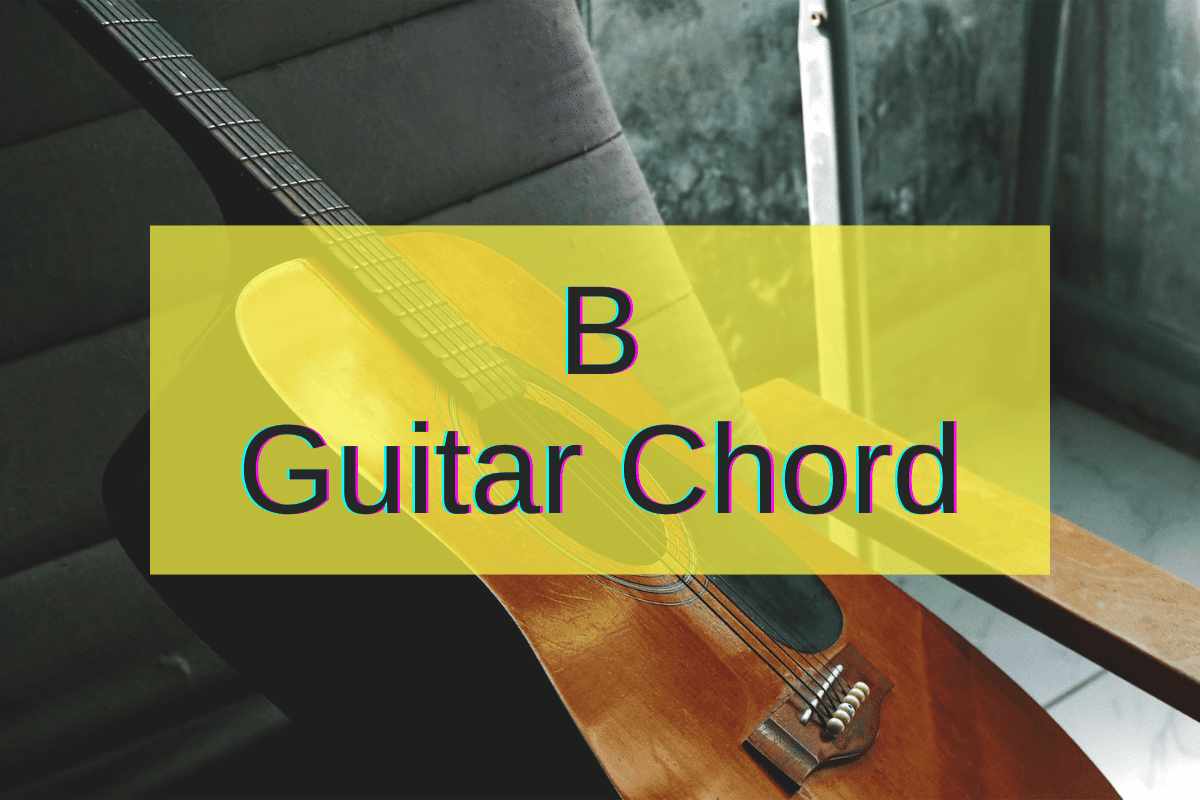The B major chord is considered one of the toughest chords to play, mostly because the key of B itself does not lend well to being played on guitar.
There are some ways to get around this and once you learn to phrase the chord differently, it can become simple and exciting.
There are a couple of different ways to play it:
- Open Bar chord shapes
- Playing inversions
- Open string shapes
- Using suspensions to allow for agility
- Playing it as a major sixth or seventh chord
- Using a Capo to “cheat”
You might say that altering the chord is cheating, but the core of it is that you keep the major triad intact or at least keep the major feel of the chord intact.
So in this case, I won’t suggest playing a B augmented or B minor because those are essentially different chords altogether, but suspensions stretch the chord a bit. Either way, let’s get into it.
The basic B guitar chord shape
The basic B chord shape is usually a Barre chord. It’s either played on the 7th frett of the E string as the root or on the 2nd frett of the A string as the root.
These are just referred to as different barre chord positions.
The B major guitar chord looks like this:
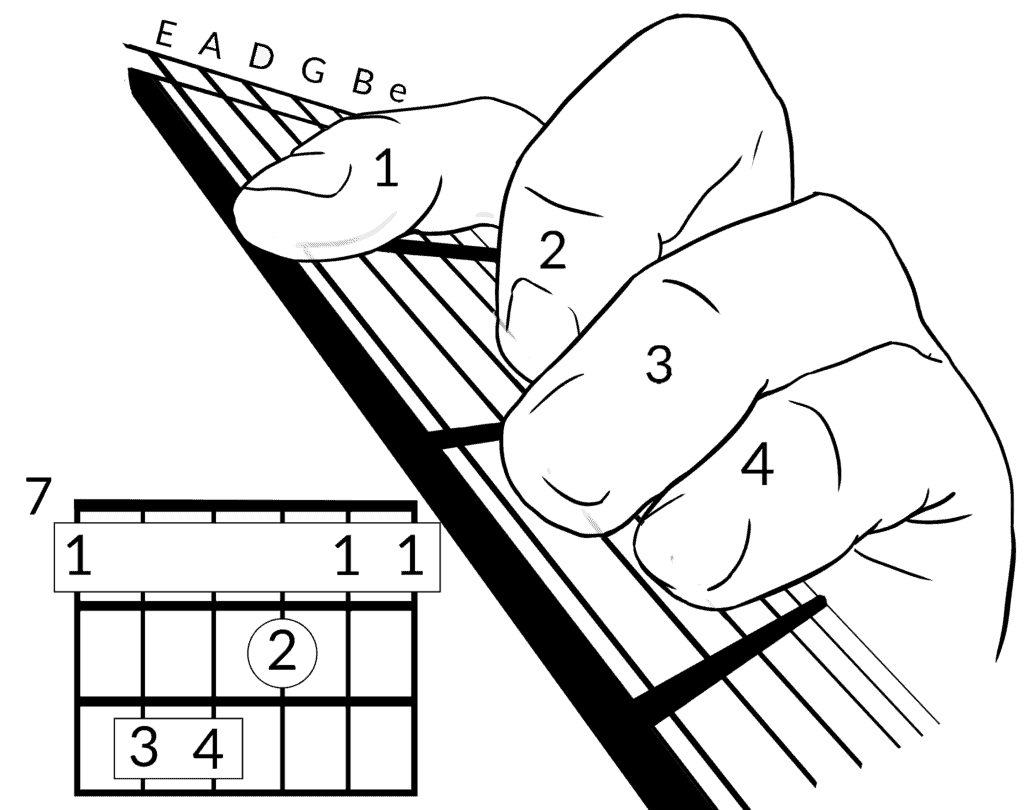
It can be difficult to play, which is why we’ll be looking at how to play it and ways to make playing it easier as well as alternative ways to play it.
6 easy alternative ways to play the B chord on guitar
Open Bar Chords
Sounds a bit contradictory, I know.
Open bar chords are just a matter of playing the necessary notes of the chord and ignoring the repeated notes.
For example, playing B major on the 7th fret of the low E string, the B note is repeated three times.
You can take two of those B’s out and ignore them, which means you don’t have to work to play them.
F# is also repeated, so if you remove that, you’re left emphasizing only three notes, which is much more manageable.
The same can be said for playing the B major on the 2nd fret of the A string. Leaving out the repeating notes will make playing the chord easier.
The simplicity created by removing the repeating notes also tends to be more pleasing to the ears.
Playing inversions
Playing an inversion of a chord is simply playing the notes of a chord in a different order.
All you’re doing is playing any note other than the root note as its bass.
This can often make it easier to play a chord. In most chord triads, you get a first and second inversion.
Let’s use B major and look at inversions of B.
In a B major chord triad, the notes are B, D#, and F#.
If you play the D# as the chord’s bass note, you’ll be playing the first inversion and likewise a second inversion for playing F# as the bass note.
Here are some examples of how you could play these inversions:

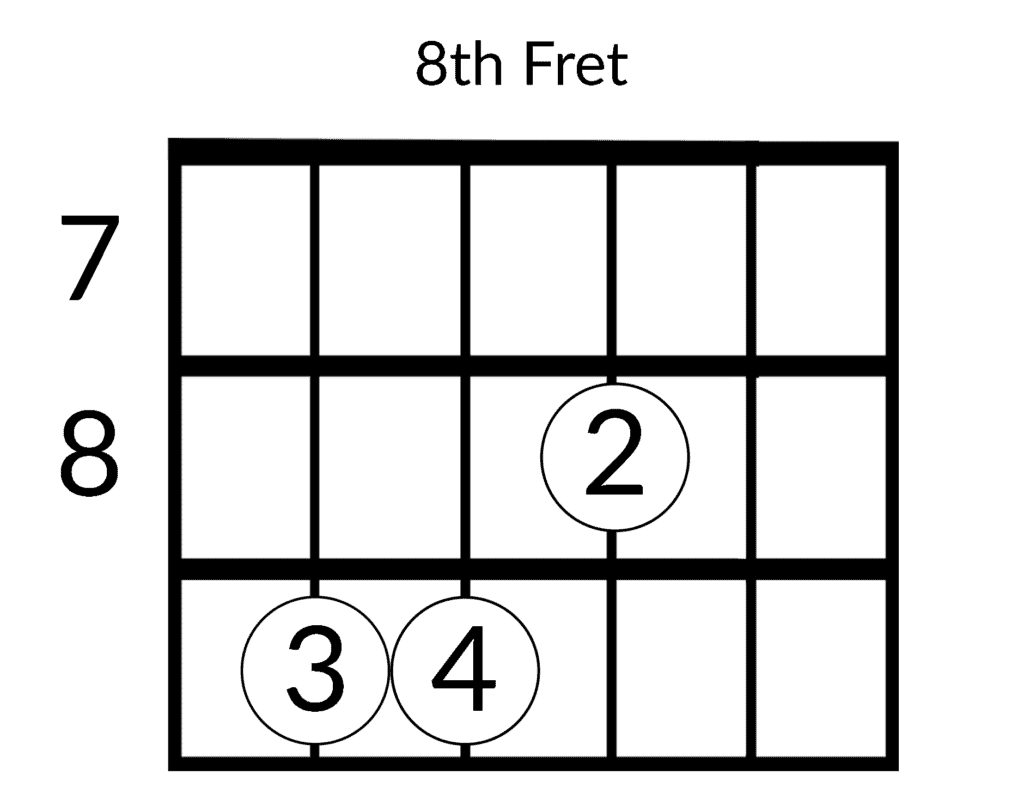
The advantage of playing inversions is that it not only allows for more options with chords but also gives a slightly different texture to the chord being played.
Inversions give a slight tension when being played, because of the emphasis on the non-root note as its bass.
Open string shapes
As beginner guitar players, we often don’t realize just how much flexibility music has to it.
You get taught chord shapes and you often think they’re absolutes, never considering experimentation.
It’s nobody’s fault if you’re in that boat. Learning music can be complicated when you take into account all the aspects of making music.
Key, rhythm, notes, scales, modes and the list goes on.
It’s understandable that in the middle of learning and mastering all of this, one wouldn’t think to stop and consider that the rules are quite bendable.
Allow me to elaborate:
Take the open C major chord for example. If you slide it up two frets, it still becomes a D major chord, because you’re playing the same note interval, just moved up to a different pitch.
The same can be done with playing a G major chord, try shifting it up until you’re playing the open G shape with your middle finger on the 7th fret and you’ll wind up with the approximation of a B major chord.

The great thing about playing guitar with this approach is that it gives you a lot of flexibility to create a unique sound.
Using Suspensions
Suspended chords are where we start stretching the meaning of “alternative ways to play a chord.”
For the beginner reading this article, suspended chords are what you get when you start swapping out some notes in the base B chord with notes further up the scale, as long as you maintain the B root.
For example: if you play B major and take the D# down to a C#, you’d be playing Bsus2, the 2 referring to the 2nd note on the B major scale. If you move the D# up to an E, you’d be playing a Bsus4.
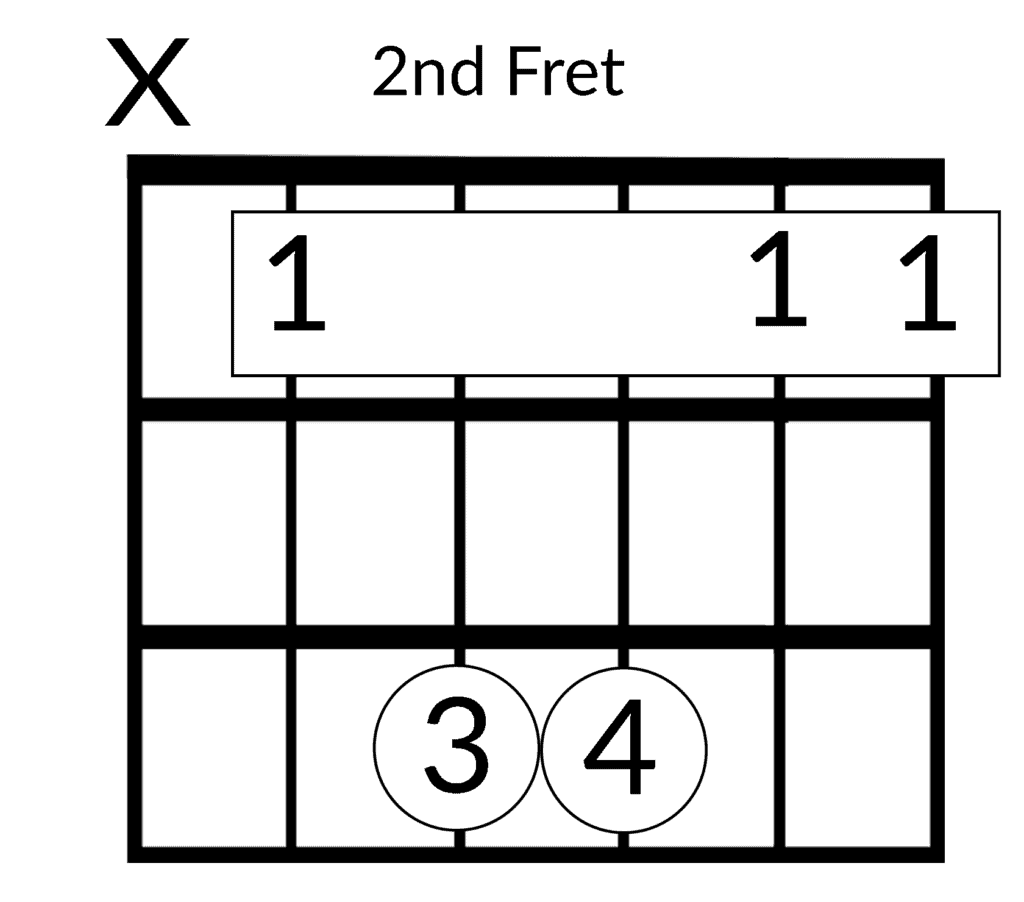
Generally, in western music, we suspend the 3rd to a second or fourth, but you don’t often hear the fifth being shifted up or down. However, that doesn’t mean you can’t give it a try.
Playing B as a major 6th or 7th chord
Major 6th and 7th chords are also sometimes seen as -add chords, depending on the instrument involved.
In this regard, we also get Major 9th, 11th, and 13th chords, but that’s jazz theory and we’re not doing that today.
A major 7th and 6th is simply playing the 6th and 7th notes on the major scale of the chord involved. For B major, playing a Bmaj6 would be adding G# into the chord.
Here you’d be playing 4 notes, which is why sometimes it’s seen as an additional chord.
The same can be said for playing B major 7th. However, these chords don’t mean you’re trying to cram an extra finger in there.
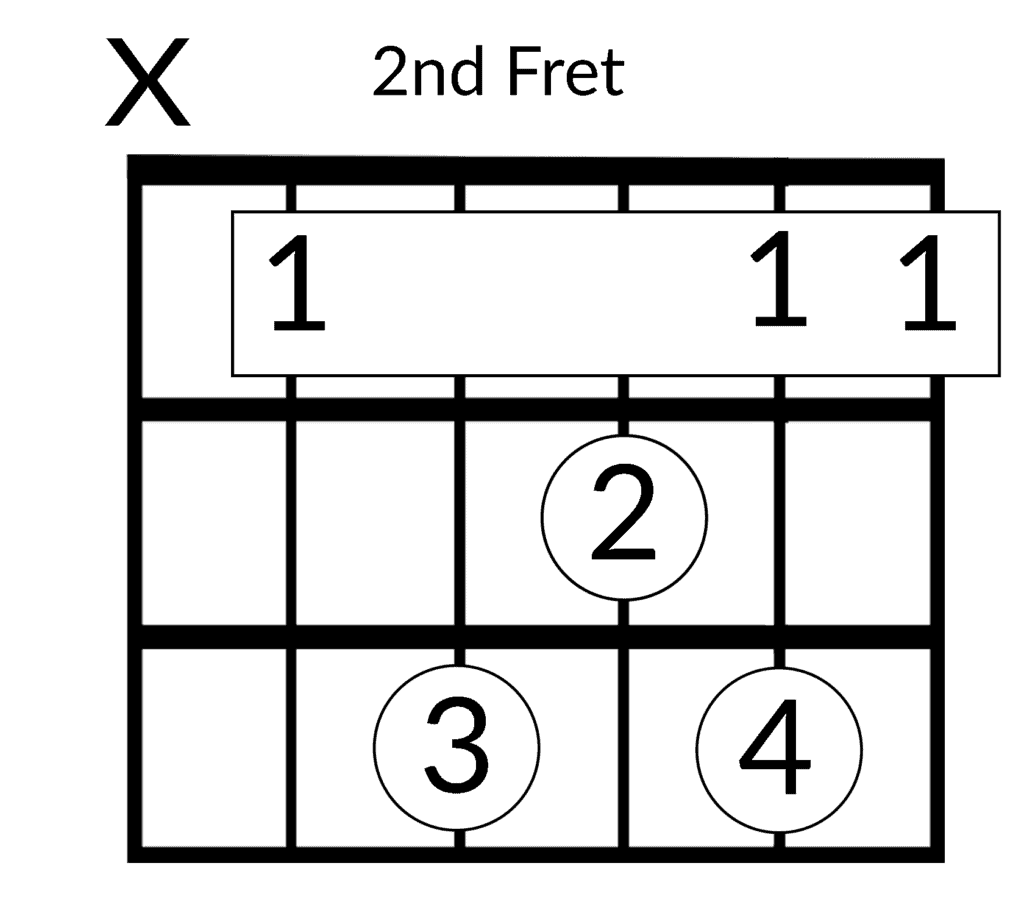
It means that you can take those repeating chords from the major bar chords and swap them out for the 7th chord, giving you more comfort along with a unique sound.
Cheating with a Capo
If you ask a guitar purist, they will tell you that using a capo is cheating.
Likewise, if you ask a music theory purist, they’ll tell you that tablature is cheating. Both are equally invalid points and should be ignored.
A capo allows you to shift the pitch of your guitar strings without tuning them differently.
It also allows you to play open chord shapes that you’re familiar with while changing to different keys.
If you have a capo, in order to play a B major, you can put the capo on the 4th fret and play an open G chord, or play an F major with the capo on the 6th, and so on.
A capo is a great tool for music-making, but the important thing is that you don’t let it become a crutch.
I think this is mostly what the purists are trying to say when they call using a capo cheating.
Tips on getting a great-sounding B chord on guitar
So, all the alternative ways to play B aside. Let’s talk about playing a B major chord so that it sounds good.
The basic B shape, or the basic B major shape, is generally a bar chord.
The difficult thing about this chord, for beginners especially, is finger strength and technique. For most experienced guitar players, we tend to play the B major rooted on the low E string.
By moving the major bar shape up to the 7th fret, you get a B major. It’s admittedly easier to play on an electric guitar.
For beginners, the bar chord shape is most difficult, because it requires that your fingers are bent enough that they don’t mute out the other strings, while also barring hard enough with your index finger that those notes sound out clearly as well.
Then there’s the barring on the A string…
This is considerably harder, because of the odd shape of your fingers needed.
There are two ways to bar this chord. One is to use all four fingers, which is pretty uncomfortable.
The second way is to barre the 2nd fret with your index while using your ring finger to barre the fourth fret, this also requires that you bend your ring finger inward enough that it lifts up at the E string. Also uncomfortable.
When it comes down to it, I recommend playing B major on the 7th frett and practicing your barre chords if you haven’t gotten it right already.
You’ll never get a clear sound out of your B major chord if you don’t work on a few technical aspects though:
- Being able to bar hard enough with your index finger
- Bending your other fingers enough that they don’t mute the strings beneath them
Below I’ve given some exercises to help.
Exercises to nail down the B chord
Bar chords are all about finger strength, so the following exercises will tackle just that:
Exercise 1

Exercise 1 only requires that you use your index finger.
You’ll start by barring your finger over the entire first fret, but only applying pressure to the high E string.
For one measure, you’ll play just the one string.
As you move through the measures, you’ll continue to add a string to be pressed, still keeping the bar shape and focusing on adding the correct pressure so that you can hear the strings you’re pressing on.
Once you’re able to bar all six strings with your index on the first fret, you move up to the second fret and repeat the process.
This exercise is great because it helps to deal with the main issue with barring: lack of index strength
Exercise 2
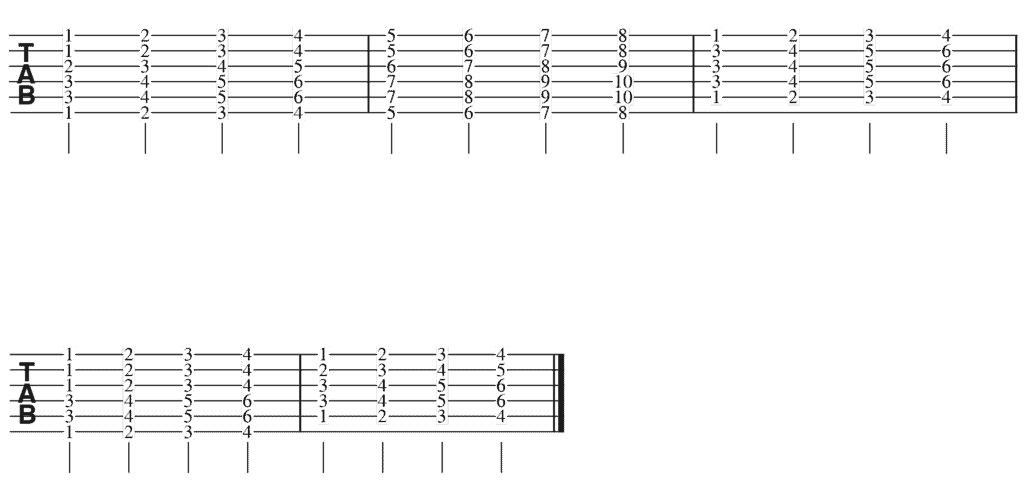
This exercise takes the four main barre chord shapes and puts you through the wringer of playing all of them up and down the neck.
One caveat though, if starting at the first fret is too difficult, you can start at a higher fret and work in reverse.
Make sure that when you strum the barre chord, you can hear each note clearly.
You may also play each note individually to check for clarity as you move through each chord shape.
Exercise 3

This exercise is pretty tough, and most guitarists probably can’t do it.
You’ll be barring each string in a sequence of moving up one fret for each quarter beat, but you’ll be barring each fret with a different finger.
If you start on the first fret, you’ll bar fret one with your index, fret two with the middle finger, fret three with the ring finger, and fret four with your pinky.
That last one is the near impossible one to do, and a little bit of leeway is given for that.
You don’t have to be able to barre every string with your pinky, but try to get as many as you can and barre fully with the other three fingers.
This exercise is particularly handy for dropped D tuning when playing chords in quick succession.
Exercise 4

This exercise will help you to become aware of how you’re placing your fingers on each string and whether you’re bending them enough.
Chord progressions that include the B chord
Starting with playing in the key of B: there are a plethora of chord progressions you could try out of the seven chords given below.
Some of the most common would be:
- I | IV | VI | V
- I | V | VI | IV
- VI | IV | I | V
- I | IV | V | VI
And remember the B major chord is also seen in other keys, namely: E major/C# minor and F# major/D# minor

Hello there, my name is Ramiro and I’ve been playing guitar for almost 20 years. I’m obsessed with everything gear-related and I thought it might be worth sharing it. From guitars, pedals, amps, and synths to studio gear and production tips, I hope you find what I post here useful, and I’ll try my best to keep it entertaining also.

